26/12/23
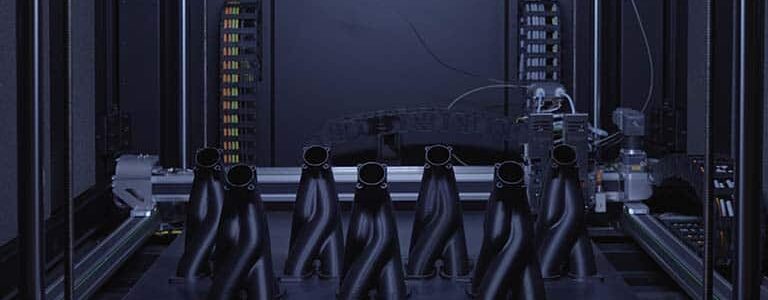
While developing a new product, the leap from design to production is one of the biggest hurdles to overcome. And with low volume production of 100-1000 parts, the cost and time sink of getting to market are multiplied exponentially and might be prohibitive.
In recent years, there’s been a growing focus on additive manufacturing as not just a prototyping technology but a full-fledged tool for low volume production, customization, and mass customization. Embracing large-format additive manufacturing for small-scale production has created a paradigm shift in fostering innovation, streamlining operations, and delivering significant cost reductions through cutting-edge 3D technology.
Ultimately, the crux of leveraging 3D printing is contributing to a single bottom line – operational efficiency.
Also known as low-volume manufacturing (LVM), is as the name implies – the production of parts on a smaller scale. Low volume production lies halfway between prototyping and mass production. This offers manufacturers a space where they can blend the flexibility of the former with the precision and repeatability of the latter.
Production of precise tooling, functional prototypes, custom parts, jigs and fixtures, and spare parts in limited quantities are some examples of low volume production scenarios. LVM is particularly advantageous when it comes down to cost-efficiency, customization capabilities, and rapid prototyping while gaining faster market access.
Small quantities of parts needed for:
The growing demand for personalized products and components has surged low volume manufacturing. Customization production relies on an automated, efficient, and lean supply chain set-up that requires a great deal of flexibility making 3D printing an ideal fit.
Low volume production also encompasses mass customization as businesses need variations of concepts to realize which features can be customized, and how to best implement them in their product lines.
Many industries require short production runs with specific requirements for niche markets. Low-volume 3D printing is well-suited for these scenarios, as it enables the cost-effective production of limited quantities of specialized products that would otherwise be hard to serve. This includes specialty vehicles, one-off products, or nonstandard designs.
Low-volume manufacturing helps in making real strides by responding to market demand and introducing new features and products at a faster pace. It enables rapid prototyping and production of units for testing, validating, and refining new designs and components. This capacity for rapid innovation is crucial in creating groundbreaking ideas by introducing new products and technologies ahead of competitors.
As environmental concerns grow, low-volume manufacturing reinforced by 3D printing underlines efforts for sustainable production methods. 3D printing’s additive nature, which builds up material layer by layer, reduces material waste and energy consumption compared to traditional subtractive manufacturing methods. By producing only what is needed and minimizing waste, it aligns with sustainable manufacturing practices.
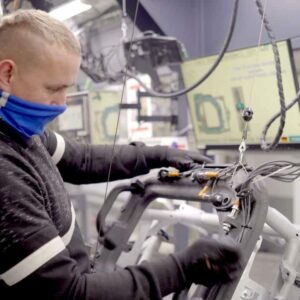
It’s hard to overstate the impact of tooling in the production process, especially in the automotive industry. With traditional methods, tooling lead times can take months and costs run high.
By incorporating additive manufacturing, the production of tools like molds, jigs, assembly, and inspection fixtures is economical and time-effective resulting in shorter lead times. Thereby expediting design and raw materials validation before transitioning to production.
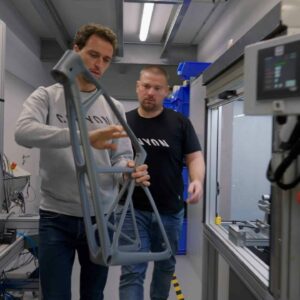 2. Rapid Prototyping
2. Rapid PrototypingIt’s a given that initial designs are prone to imperfections, so prototyping allows engineering to try out parts and explore possibilities. The ability to swiftly implement changes is advantageous in such scenarios as low volume production offers the flexibility for making real-time adjustments.
Originally 3D printing was developed for rapid prototyping, so it’s no surprise that it’s a natural choice for low volume production processes.
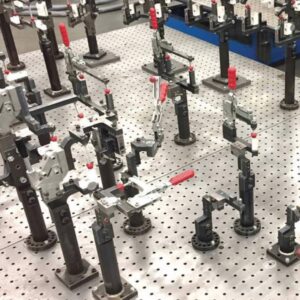
When manufacturers need a part for a machine or a prototype, it might take a while for thereplacement to arrive,
leading them to seek out alternative methods to avoid delays.
Low volume production encourages uptime by being a stand-in until the ordered part comes through. With an in-house 3D printer, the part can be produced with materials like BigRep’s TPU that’s flexible yet strong.
Low volume runs of a part might be required between the interim stage of product development and full-scale production. These units are samples for tes
ting, fit checks, verifying the design, checking conformance quality, and eliminating foreseeable defects.
This is vital for newly developed products or components to avoid any risks before mass production.
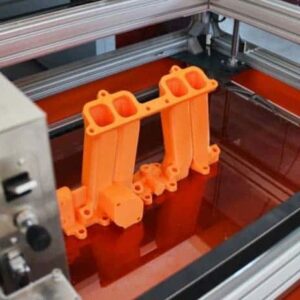
Low or sporadic demand, initial pilots of a new product or market, parts produced in limited editions, and specialized components raise the need for small-quantity production.
Reliance on outsourcing production might not be the most cost and time-effective as typically there’s a minimum order quantity and no flexibility in changing the order size. Also, the limited window to make iterations to products before hitting the market encourages manufacturers to create in-house low volume production workflows.
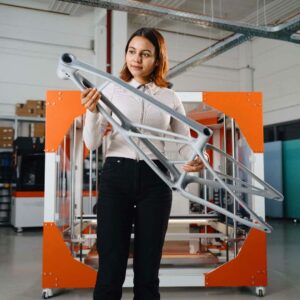
When there isn’t predictable demand, the production of units as and when needed helps with avoiding the high costs. This just-in-time manufacturing approach in low quantities is an alternative to maintaining inventory management in warehouses.
Parts can be 3D printed on-demand, eliminating logistical challenges, minimizing the risk of overstocking, and reducing the time it takes to fulfill and respond to changing requirements.
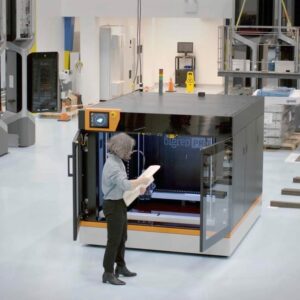
In some cases, especially with legacy systems or machines, certain components may become obsolete or discontinued. Low volume 3D printing can provide a cost-effective solution by reverse engineering and fabricating replacement parts, extending the life of equipment that might otherwise be rendered unusable.
LVM is particularly valuable in building a spare inventory of replacement components where production volumes are low.
Factors like design freedom, reliable quality prints, prototyping capabilities, repeatability, low cost, and a hands-off approach have created a surge in the adoption of LVM 3D printing. Industries are taking the printing process into their own hands, ensuring their products are leading the market in innovation by introducing new designs and features before competitors.
Also when it comes to the range of materials, 3D printers such as the BigRep PRO have a diverse engineering-grade filament portfolio and are open to third-party materials enabling flexible applications.
Automation enables lights-out manufacturing minimizing the dependence on highly skilled workers, furthering peace of mind in the production process.
Safi Barqawi, the owner of AVI Boston, an Automotive Custom Fabrication company talks about about how the BigRep Studio is like an extra pair of hands in his workshop.
“Finding skilled fabricators and installers are a challenge, but with our 3D printer, it’s like having a full-time employee building parts. We design, press print, go away for the weekend and all the parts are ready by Monday morning.”
3D printing software such as BigRep’s, aids material handling, remote print monitoring, data analytics, auto calibration, batch production, automated design, and workflows. This results in closer ties and predictable workflow timelines across the length of the print process. The best part of using these softwares is that it requires no prior experience in 3D printing or CAD software skills reducing the learning curve for operators.
3D printing technology excels in ensuring the accurate production of large to small sized parts, a critical aspect in maintaining product quality. The exceptional tolerances ensure the creation of complex geometries with precision, making it a reliable choice for manufacturing high-quality, sizable parts.
“The biggest advantage of large-scale 3D printing is getting rid of assemblies. When we can produce bigger parts in one piece, this gives us a huge advantage.”
Lars Bognar, a research engineer for additive manufacturing at Ford Engineering Europe.
The large build volume enables the efficient batch production of multiple parts or larger components in one go. This reduces the need for assembly, streamlines the manufacturing process, and is cost-effective.
Unlike traditional methods that involve cutting parts from large chunks of non-recyclable materials, 3D printing uses only uses what’s required, drastically reducing waste and material costs. This resource-efficient approach aligns with sustainability goals while simultaneously offering financial savings. The option of printing parts as needed also brings down costs associated with inventory and logistics.
WAT Berlin, an automotive manufacturer specializing in the production of vehicle frames is dramatically improving workflows in their facilities with custom 3D printed parts. André Lenz, an engineer at the Berlin facility elaborates on how the BigRep ONE has been enabling the production of light-weight, durable components.
“If we had made them out of steel or aluminum, for example, it would have been incredibly expensive and above all heavy and made from multiple parts.”
3D printing simplifies manufacturing by serving as a one-step process, eliminating the need for multiple machines, thus saving valuable time and reducing associated costs. The process is also easily automated, allowing for unmanned operation and further cost reductions.
Low-volume production thrives in scenarios that are fast-paced, innovative, and cost-efficient. 3D printing’s versatility, automation, precision, and efficiency make it a perfect choice. An Ecosystem such as BigRep’s creates a unique environment with innovative 3D printing technology and solutions for low volume production and beyond.
Register to download the eBook, 7 Ways BigRep 3D Printers Unlock Profit Instantly.
Discover how investing in large format additive manufacturing (AM) can revolutionize your industrial business, driving innovation, efficiency and significant cost savings with BigRep’s advanced technology.
The BigRep PRO is a 1 m³ powerhouse 3D printer, built to take you from prototyping to production. It provides a highly scalable solution to manufacture end-use parts, factory tooling or more with high-performance, engineering-grade materials. Compared with other manufacturing and FFF printing solutions, the PRO can produce full-scale, accurate parts faster and at lower production costs.